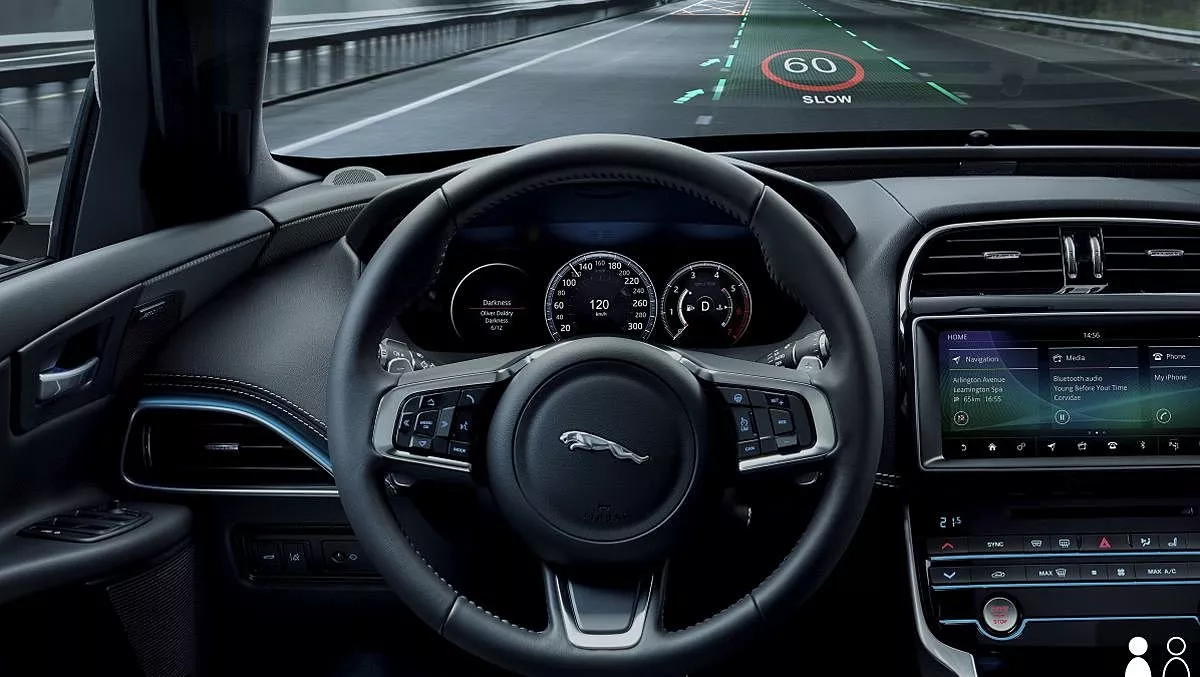
Jaguar Land Rover is developing an immersive, 3D in-car experience, utilising head-up display research.
The technology aims to project driver safety information ahead of the driver with the intention of improving reaction times to road hazards. In addition, it could offer passengers 3D entertainment in a future where autonomous, ride-sharing cars are the norm.
When it comes to safety alerts, these will include notifications about lane departure, hazard detection, sat nav directions, and to reduce the effect of poor visibility in poor weather or light conditions, the company says. Augmented reality would add the perception of depth to the image by mapping the messages directly onto the road ahead.
Studies conducted in Germany show that the use of Stereoscopic 3D displays in an automotive setting can improves reaction times on popping-out instructions and increases depth judgments while driving, according to the company.
Jaguar Land Rover NZ general manager Steve Kenchington says the research into the new system of alerting drivers show significant promise.
“The application of this new augmented reality technology as an effective early warning system has the potential to provide road users with the critical extra seconds they need to mitigate upcoming road hazards,” he says.
In the future, the technology could also be used by passengers to watch 3D movies. Head and eye tracking technology would follow the users position to ensure they can see 3D pictures without the need for individual screens or shutter glasses worn at the cinema, according to the company.
In a fully autonomous future, the 3D displays would offer users a personalised experience and allow ride-sharers to independently select their own infotainment. Several passengers sharing a journey would be able to choose their own media including journey details, points of interest or movies and optimised for where they are sat.
Kenchington says the development of autonomous driving is spurning a new frontier in automotive entertainment systems.
He says, “Historically our cars have been seen primarily as a mechanism to transport us safely from A to B and, as a result, the driver is often isolated from the other passengers - particularly on long journeys.
“With self-driving technology expected to take over the responsibility of ensuring our safe arrival, what we will see in the future is a move away from sole use of personal devices and the opening up of integrated entertainment systems that helps reconnect family members,” says Kenchington.
The research, undertaken in partnership with the Centre for Advanced Photonics and Electronics (CAPE) at University of Cambridge, is focused on developing an immersive head-up display, which will closely match real-life experience allowing drivers to react more naturally to hazards and prompts.
Jaguar Land Rover Human Machine Interface - Head-Up Display researcher Valerian Meijering, says, “Development in virtual and augmented reality is moving really quickly. This consortium takes some of the best technology available and helps us to develop applications suited to the automotive sector.
“Not only does it provide a much richer experience for customers, but it also forms part of our Destination Zero roadmap; helping us to move towards a safer, more intuitive and smarter future, for everybody,” says Meijering.
Centre for Photonic Devices and Sensors director and Centre for Advanced Photonics and Electronics director, Professor Daping Chu, says, “This programme is at the forefront of development in the virtual reality space were looking at concepts and components which will set the scene for the connected, shared and autonomous cars of the future.
“CAPE Partners are world-leading players strategically positioned in the value chain network. Their engagement provides a unique opportunity to make a greater impact on society and further enhance the business value of our enterprises.
The next-generation head-up display research forms part of the development into Jaguar Land Rovers Smart Cabin project, which sees the company investing in technologies which create personalised spaces inside the vehicle for driver and passengers with enhanced safety, entertainment and convenience features as part of an autonomous, shared future.
This is also part of a larger strategy known as Destination Zero, in which Jaguar Land Rover aims to make societies safer and healthier, and the environment cleaner through zero emissions, zero accidents and zero congestion.
